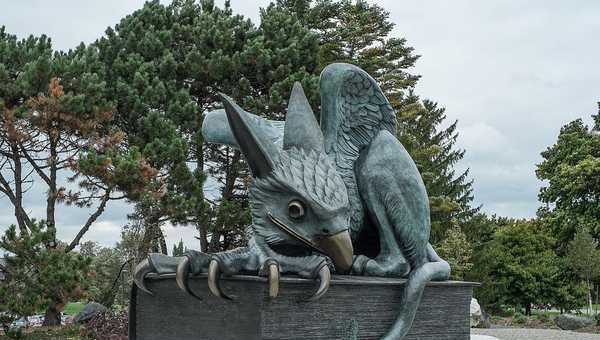The Ancient Discovery and Understanding of Fossils in China
Despite the frequent discovery of fossils in modern times, ancient civilizations also found and studied fossils, though they interpreted them through mythological and cultural lenses, from dragon bones in Chinese medicine to griffins in Greek mythology.

The relationship between humans and fossils stretches back into antiquity, with fascinating examples from ancient China demonstrating early encounters with these prehistoric remains. One of the most remarkable early documented cases comes from the Northern Song Dynasty, where the renowned poet and calligrapher Huang Tingqian (1045-1105) collected and inscribed what would become China’s first scientifically documented fossil specimen - a Sinoceras chinense.
Ancient Chinese scholars approached fossils through various interpretive frameworks. In traditional Chinese medicine, large vertebrate fossils were often classified as “dragon bones” (longgu) and incorporated into the pharmacopoeia. Historical records from the Tang Dynasty describe these “dragon bones” being sourced from specific regions, with detailed observations about their characteristics and medical properties.
The understanding of fossils evolved across different periods:
Ancient Chinese texts reveal a sophisticated system for categorizing fossil finds. The Yunlin Stone Catalog provides detailed descriptions of fish fossils from Hunan Province, noting their preservation in layers of rock and distinctive anatomical features. This level of observation shows remarkable early scientific thinking, even without modern geological knowledge.
The cultural significance of fossils manifested differently across civilizations. While Chinese scholars often interpreted fossils within medical and cultural frameworks, Greek historians like Herodotus connected fossil finds to mythological creatures like griffins. These varying interpretations reflect how different cultures made sense of these mysterious remains.
By the Ming Dynasty, some scholars began questioning traditional interpretations. Ni Zhumo in his “Bencao Huiyan” expressed skepticism about the abundance of “dragon bones,” suggesting that not all fossil specimens could be from mythical dragons. This represents an early example of critical scientific thinking about fossil origins.
Modern paleontological research has identified many of these historical “dragon bones” as fossils of extinct mammals, including various species of rhinoceros, elephant, and other Pleistocene megafauna. This scientific understanding bridges ancient observations with contemporary knowledge, showing how human comprehension of fossils has evolved over millennia.
The historical progression from mythological interpretation to increasingly scientific understanding mirrors the broader development of human knowledge. These early encounters with fossils, whether interpreted as dragon bones or other mythical creatures, represent humanity’s persistent effort to make sense of the natural world.